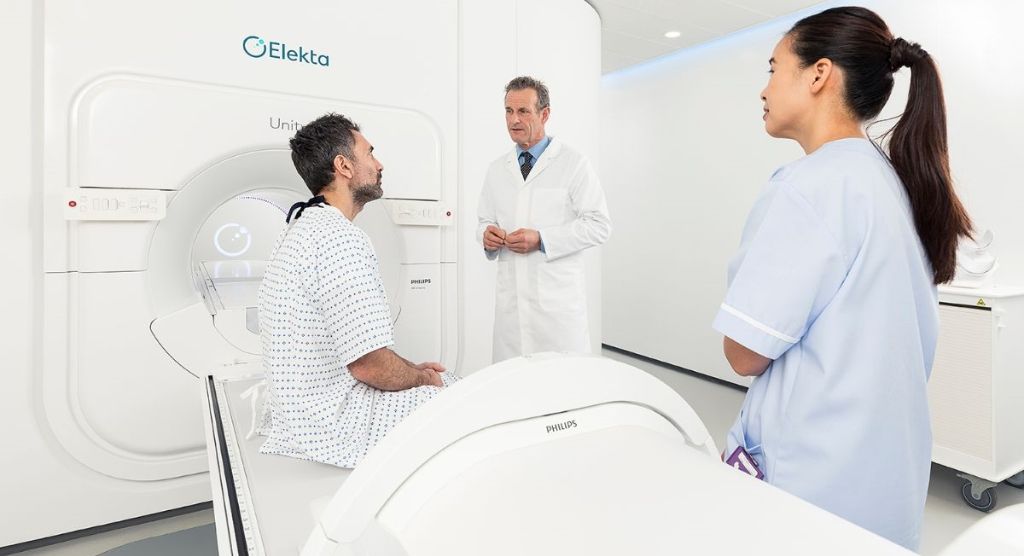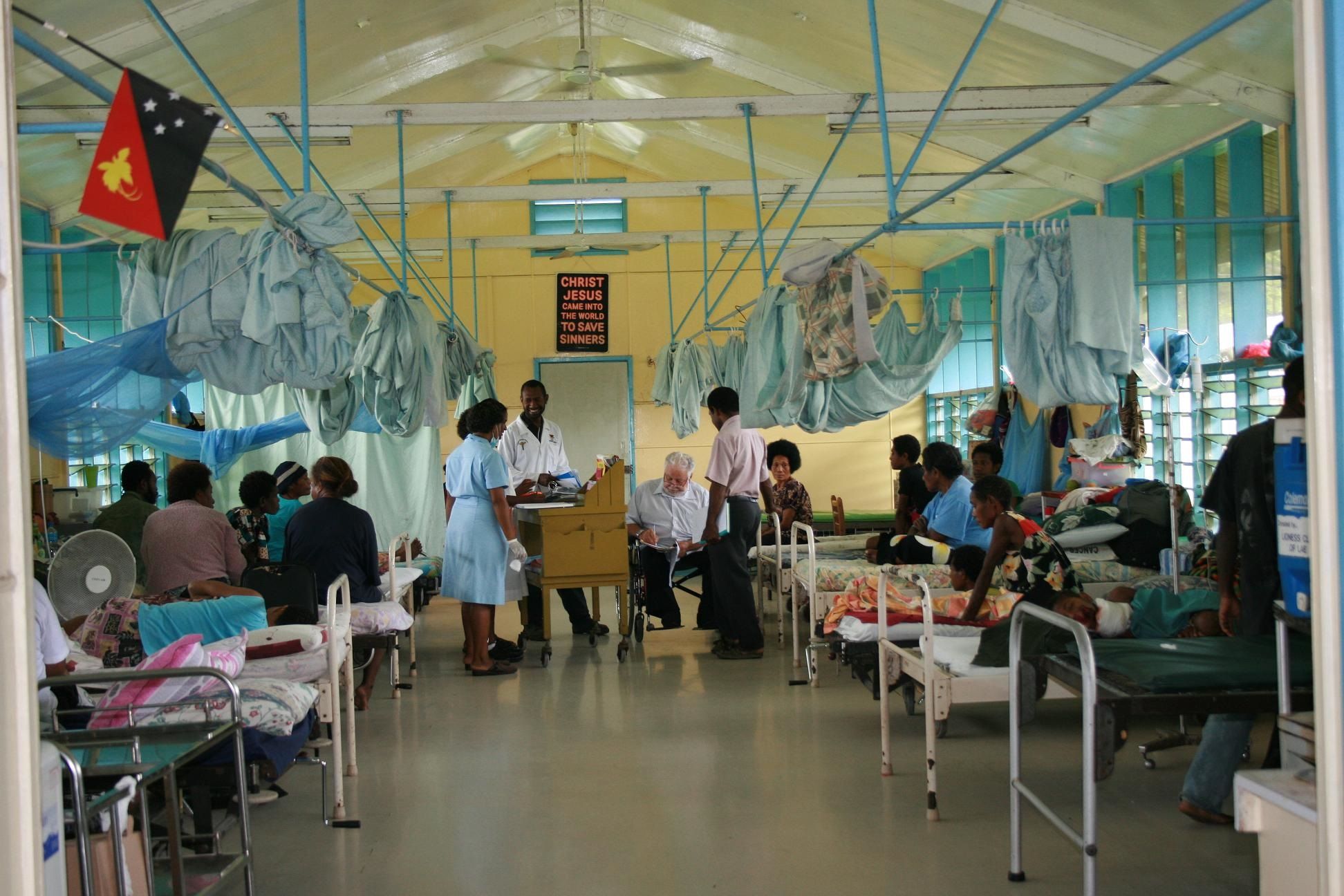Artist transforms Italy’s radiotherapy departments
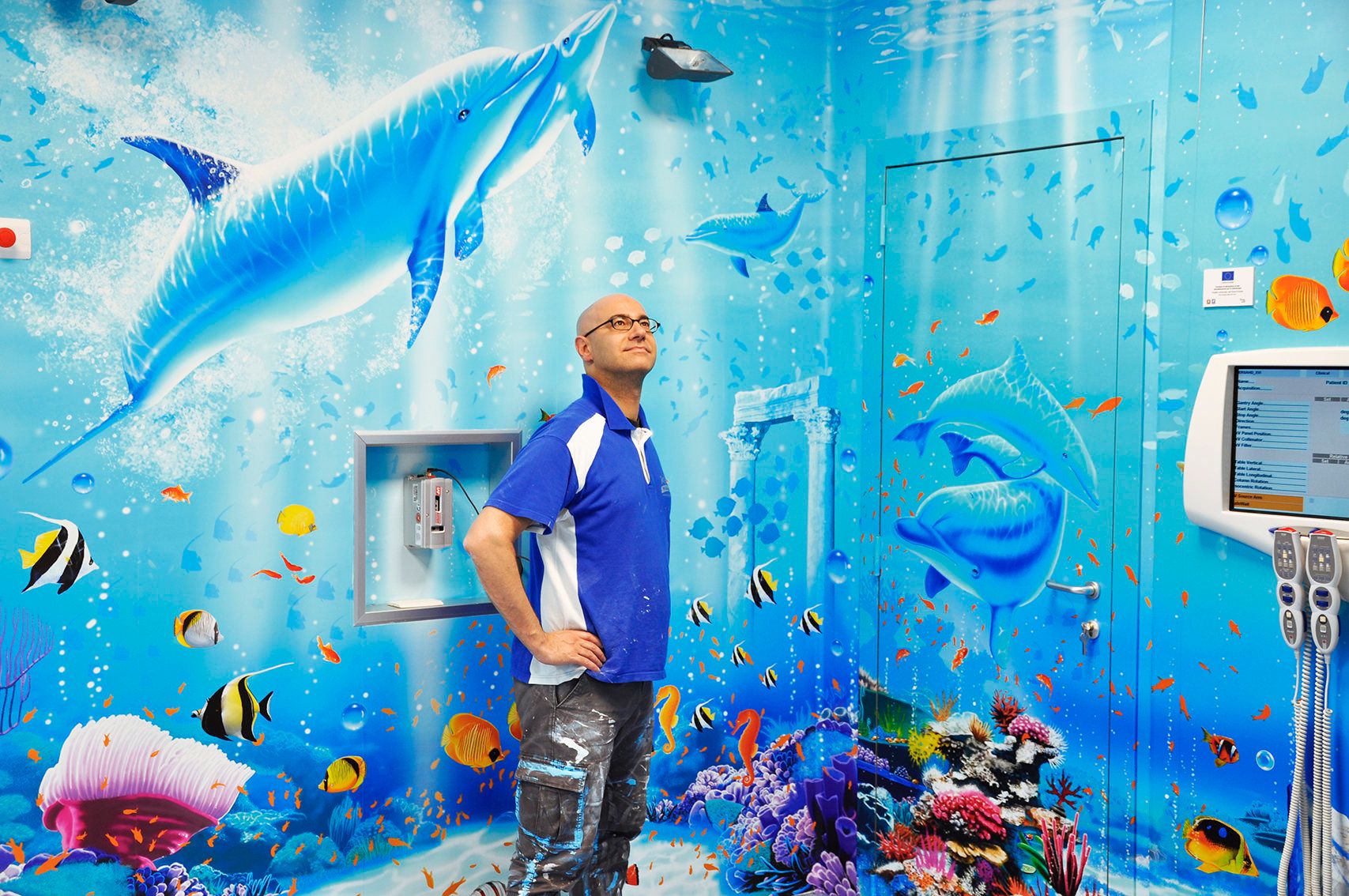
Ospedali Dipinti (“Painted Hospitals”) founder Silvio Irilli’s breathtaking, technicolor murals astound patients and radiation therapy staff alike
Most radiation therapy department personnel likely consider treatment rooms and other radiotherapy clinic spaces as rather utilitarian. For patients – children especially – the clinical atmosphere can be intimidating. In Italy that all began to change when, in 2011, Silvio Irilli arrived on the scene. From energetic cartoon animals and majestic images of ancient Rome, to coral reefs teeming with vibrant sea creatures, 24 Italian radiotherapy clinics and hospitals to date are now places that evoke strong positive emotions, rather than the stress of cancer therapy.
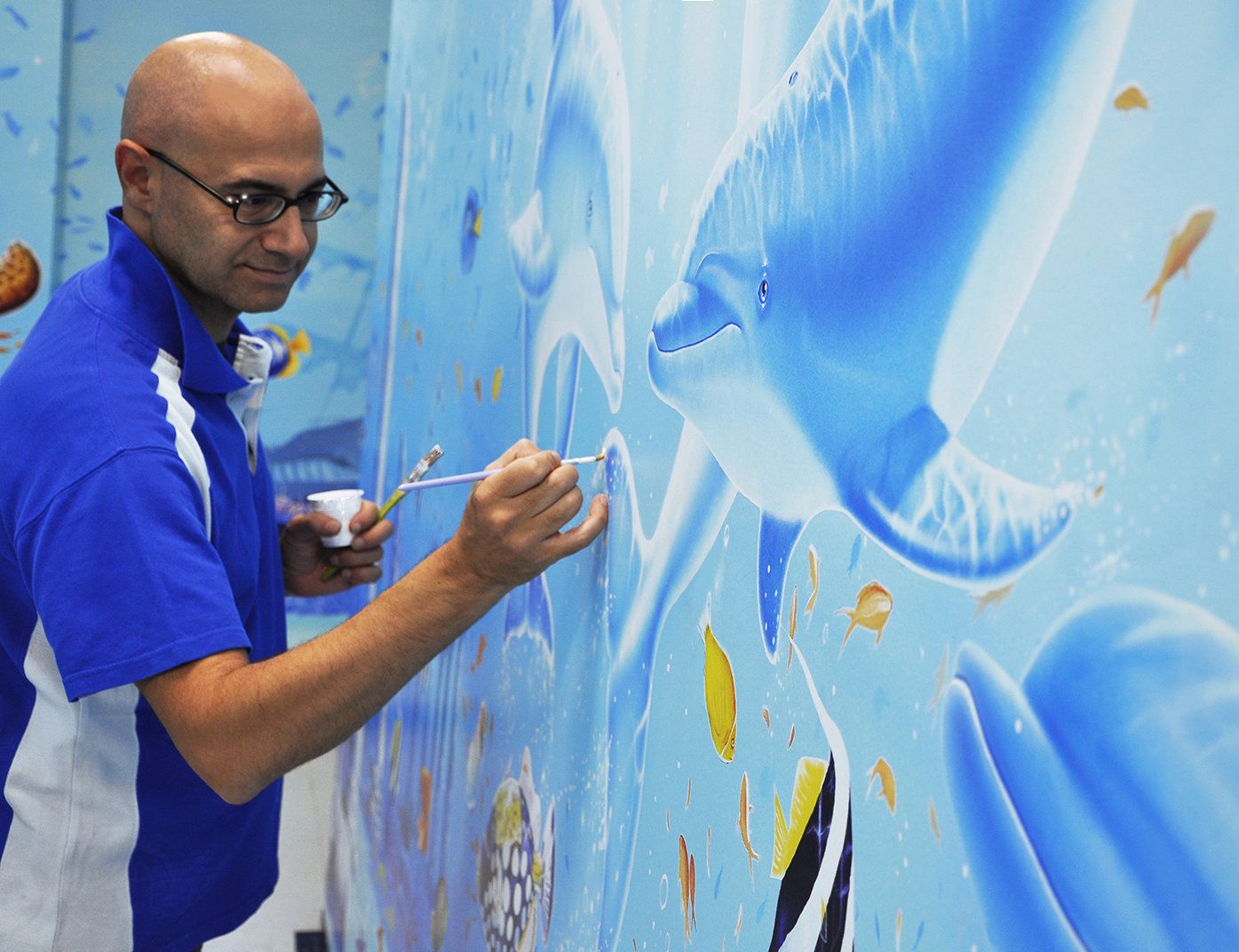
Born in Chieri, Italy, 52-year-old Silvio began drawing at the age of six and dreamed of continuing this activity as an adult. He fulfilled this dream when, at age 21, Silvio adopted painting as a profession, providing caricatures of sportsmen in weekly or monthly magazines.
“Seeing my productions published gave me confidence that I could continue with my artistic profession and pushed me to see what more I could do,” he recalls. “I had some success and also some rejections, but the latter didn’t bother me because I knew painting was what I wanted to do for the rest of my life. My reputation spread slowly but surely and in 2007 I got a huge break.”
On his first trip flying abroad at age 37, that “break” was Atlanta’s Georgia Aquarium, which commissioned Silvio to paint two murals, one on a wall section and another on the facility’s atrium during 2007-2008.
“In the atrium, it’s basically the first thing you see as you enter the aquarium and it’s cinematographic – you can envision the motion of these porpoises, an enormous whale shark and other fish,” he says. “This project was a major milestone and turning point for me because it identified my primary talent, which is depictions of marine life. It’s what I’m really passionate about.”
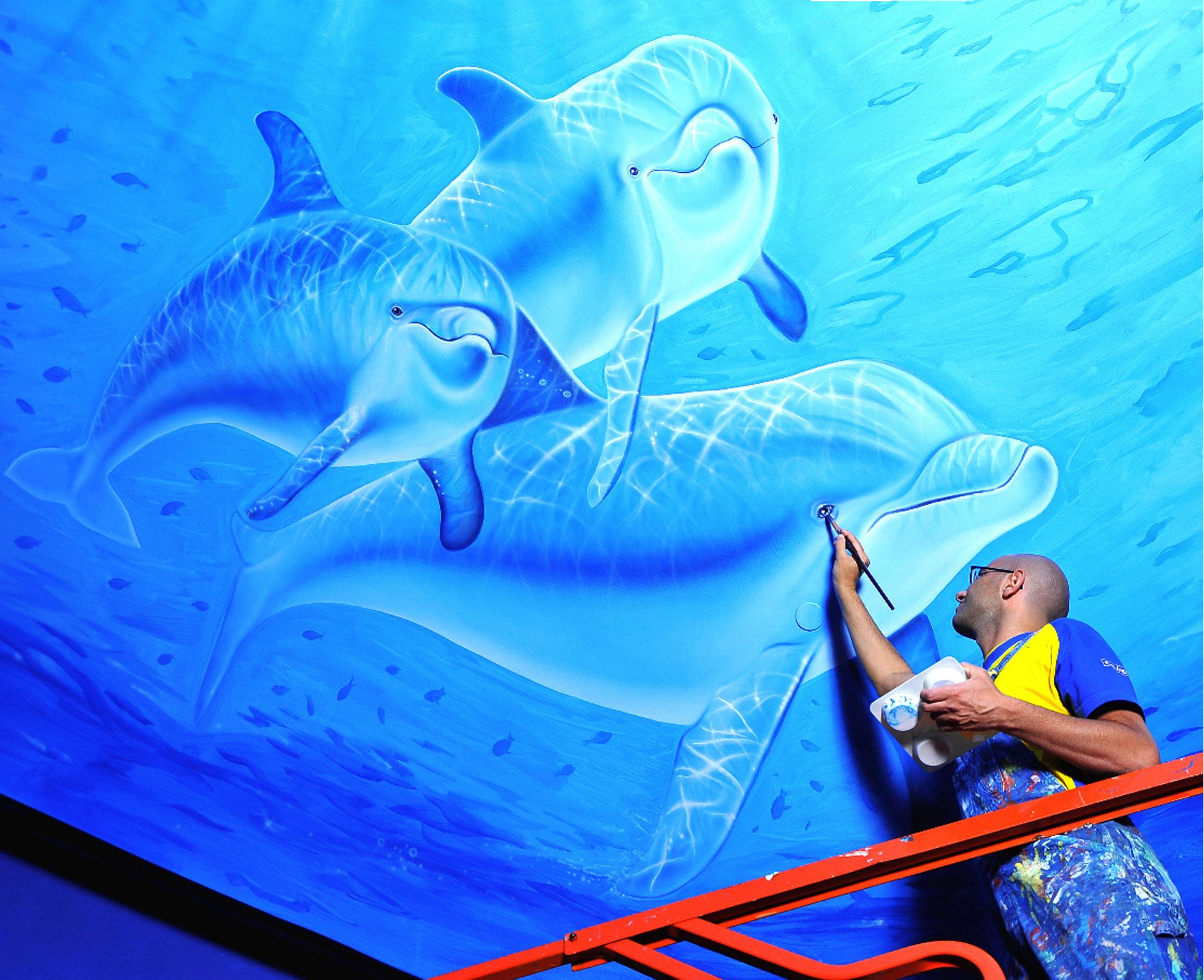
Silvio’s repute spread from that point on, especially in his home country. In 2011, radiation oncology department officials at Rome’s Ospedale Policlinico Gemelli (Gemelli Polyclinic Hospital) called him to discuss the possibility of creating murals in their department.
“They imagined that patients viewing such artwork would make them feel better when embarking on such a serious journey,” he remembers. He reprised the aquatic theme for one Gemelli bunker (“Acquario”) in 2011 and proposed different subjects for two others – this time portrayals of the ancient Roman community of Villa Adriana (“Aventino”) with the Aventino view and a route within Villa Adriana (“Tivoli”) and The Colosseum (“Colosseo”) completed in 2012 and 2013.

Silvio’s Gemelli projects, including the 2014 “Il Giardino dei Sogni” (The Garden of Dreams), inspired him to launch his project dedicated to hospitals called Ospedali Dipinti (“Painted Hospitals”). From 2015 to today, adorning the walls and ceilings of radiotherapy departments with spectacular undersea vistas and stunning landscapes has been an obsession of Silvio’s Ospedali Dipinti.
“I love transforming hospital departments into emotional environments, because the patient is not just a patient, he or she is a person.”
Painting with a purpose
But Silvio stresses that Ospedali Dipinti isn’t just art for art’s sake – far from it. It’s about the feelings that his works elicit among radiotherapy department staff and, in particular, patients.
“I love transforming hospital departments into emotional environments, because the patient is not just a patient, he or she is a person,” he observes. “This is especially important when children must face cancer treatment. They find themselves in a context that is outside their normal world. It’s critical to recreate their childhood world in a hospital ward, which allows them to continue dreaming.
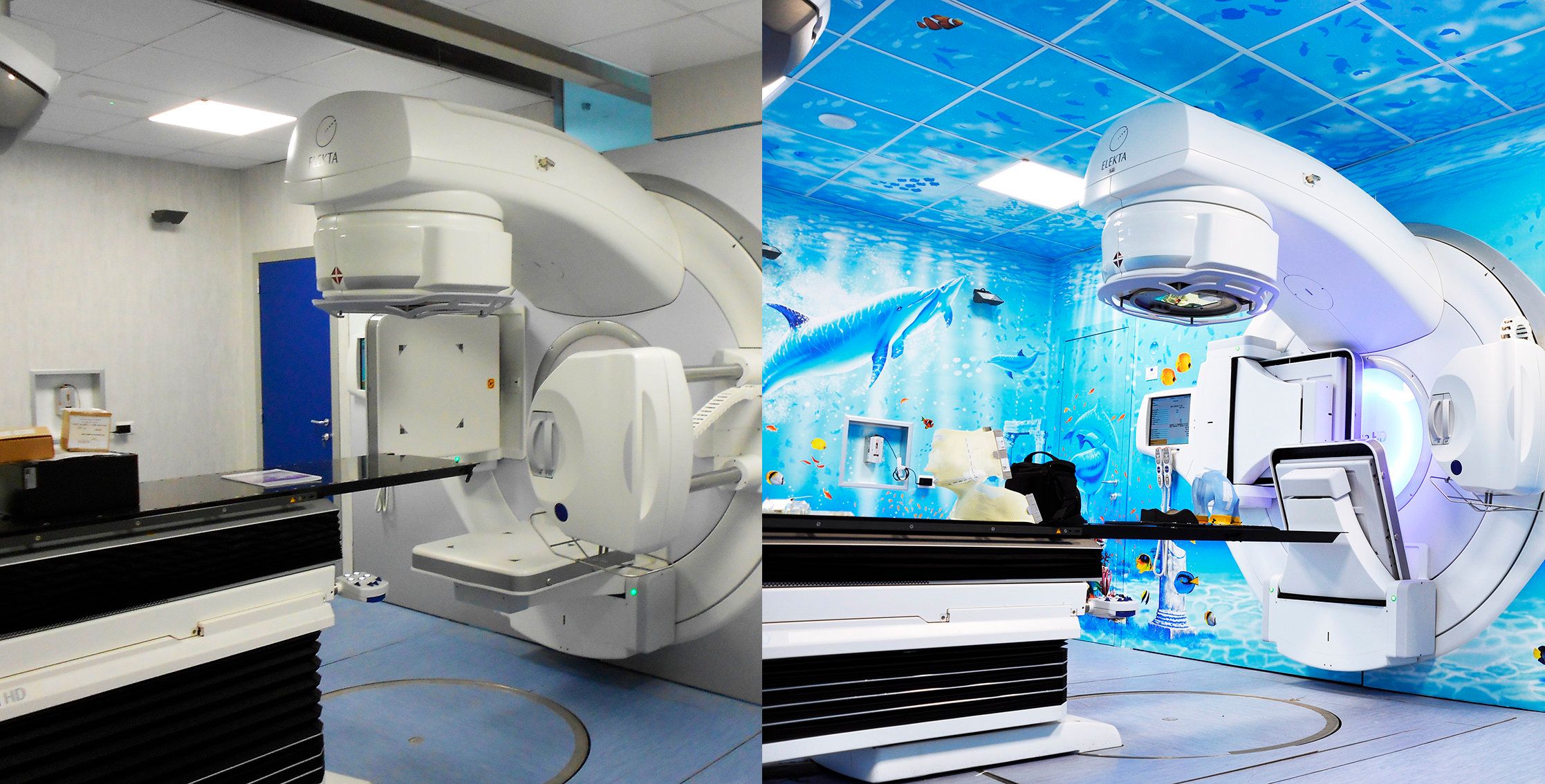
This is why every work I make must interact with the children, telling them a story so that their therapy path becomes a game,” Silvio continues.
“When I create a work for a pediatric ward, I think of a vital aspect, which is how the doctor can win the child’s trust during their therapy. When this happens, an interaction is created with the surrounding environment and the child listens more confidently to the doctor’s treatment instructions, which sends a message of tranquility to the parents as well.”
The murals, he says, tap deeply into a child’s imagination as well, transcending the reality of a 2D drawing. Silvio has heard children talking to the marine creatures depicted in the frescoes or giving them names.
“They are fully into this new world,” he says. “So, they create stories in their mind and this makes them feel really good.”
At Ospedale Ruggi d’Aragona di Salerno, for example, the Versa HD bunker, the control room, walls and rooms throughout the department are decorated with whimsical marine animals that radiotherapy staff can show children and tell them a story.
“They tell a child that he or she is captain of the ship and that, although they have to embark on a difficult situation, they can make it because they’ve got so many friends around them,” Silvio explains.
The parents of children receiving radiotherapy have been enthralled by Silvio’s artwork and have made their opinions clear on Ospedali Dipinti’s Facebook page. Here is a sampling (translated from Italian):
“My son is one of them [patient]. A year ago, he had to face 28 radiation sessions, the first session done under anesthesia. Later, thanks to the beautiful scenery that surrounded him, he managed to do them while conscious, at only four-years-old….Thanks!!!”
“Beautiful fairy tales are not only those we read in books, there are others, I still think beautiful, that invite us to reflect and to become aware that often even in arid, burnt fields, flowers can grow…And there are flowers, there are children who smile…Silvio Irilli, how wonderful your fairy tales.”
“Seeing a child smile…With eyes full of wonder and amazement, traveling in this colorful and fantastic world, this once you have painted, is the most appropriate therapy. A huge applause Silvio Irilli.”
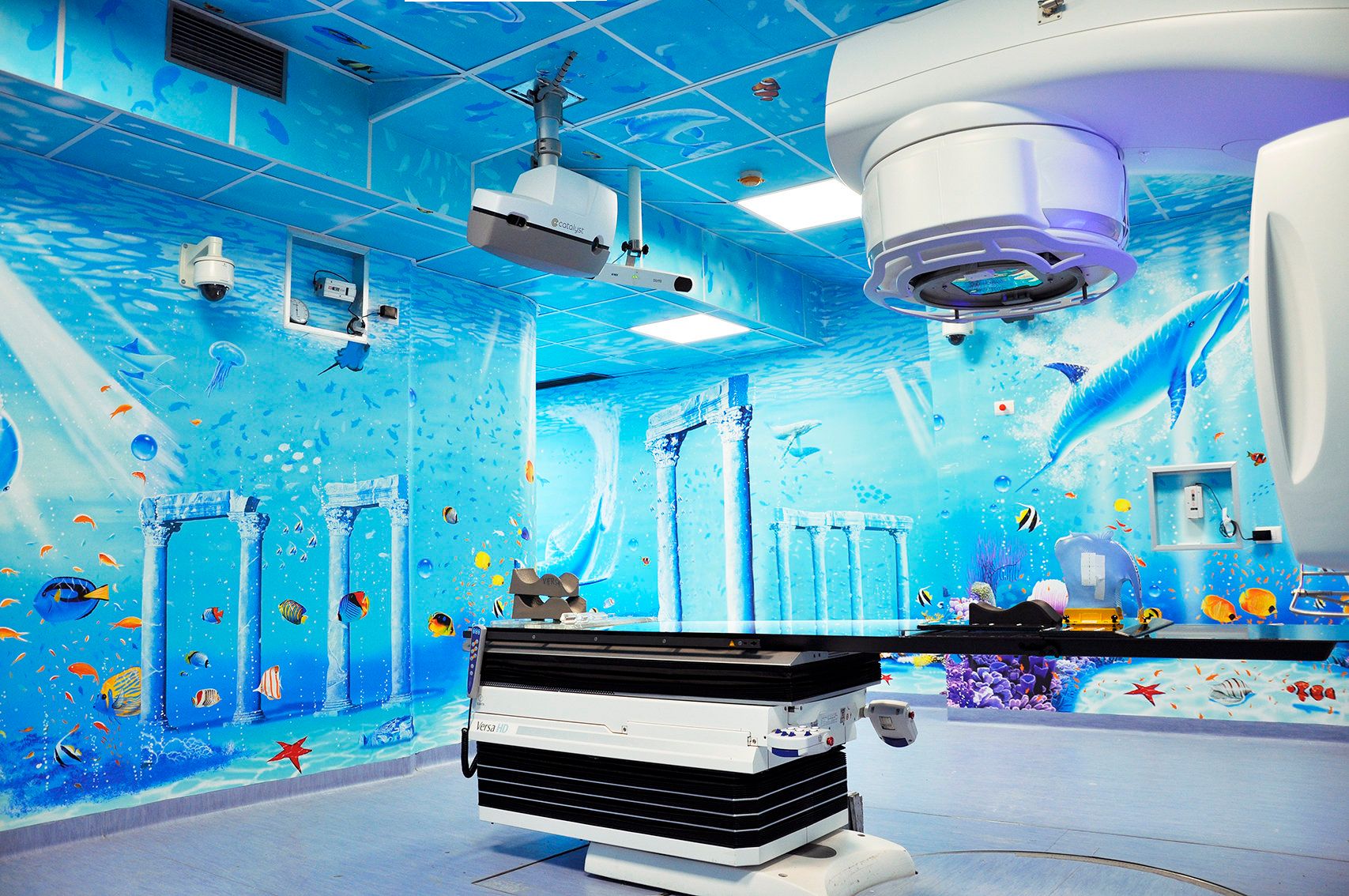
Spurring the imagination is for adults too, he adds, which is the inspiration for works at Ospedale Policlinico Gemelli. The paintings showcase Villa Adriana and The Colosseum.
“Scenes of ancient Rome, rich in history, can really transport the patient back in time and make them think about how life used to be millennia ago,” Silvio says. “It’s a way to bring adult patients into another dimension, rather than dwelling on their reason for being there.”
One such adult commented on Silvio’s Facebook page (translated from Italian): “I still remember as if it were today…radiotherapy for 3 months for a malign tumor. This ‘bunker,’ [Gemelli Art] decorated like Villa Adriana, it has given me hope for life. Colors do help the spirit.”
Picking up the pace
From 2011 to 2020, Silvio has created single or multiple murals for at least one hospital every year and the industrious painter’s workload is only gaining steam. In 2021 alone, he provided artwork for clinical departments at seven medical centers, the result of prodigious word-of-mouth as well as traditional and social media.
“These projects sell themselves because hospital staff know that the murals ease patients’ anxiety.”
“I’m not going on vacation this year, because I’ve got deadlines in September and October for two important projects,” he says. “These projects sell themselves because hospital staff know that the murals ease patients’ anxiety. Secondly, during the pandemic, the hospital wasn’t a happy place to visit. Making radiotherapy departments, at least, more beautiful places is a way to repair a hospital’s reputation.
“Third,” Silvio continues, “these projects are popular because it’s not just me making them happen. Yes, as the artist I create the murals, but I’m supported by so many people – sponsors, agencies, Ospedali Dipinti assistants and many others. In addition, funding from organizations such as Onlus and non-profit foundations helps avoid public spending. I put my signature on all Ospedali Dipinti works, but the signature really represents a team effort.”
Salerno physician, Elekta service engineers and Gemelli psychologist confirm the magic of Silvio’s murals
Radiotherapy staff and field service engineers are not immune to the charms of Silvio’s magnificent artwork. Giuseppe Scimone, MD, Head of Pediatric Radiotherapy at Ruggi d’Aragona Hospital in Salerno, Elekta engineers Salvatore Tolimei and Augusto Saletta, and psychologist Elisa Marconi, PhD, at Gemelli Polyclinic Hospital share their impressions.
Dr. Scimone
“Although entering the bunker can be a traumatic experience for a child, diving into the ‘aquarium bunker’ is seen as a game and helps the child overcome his or her fear. Each child reacts in a different way. The first time the feeling of amazement persists, then subsequently they settle down and each child ‘chooses a special friend’ who protects them throughout the treatment path.
“Some of the kids absolutely must say ‘hello’ when they see the turtle at the bunker’s entrance, some choose Nemo or the seahorse or look at the dolphin watching them from above while lying on the patient support.
“All of this increases their compliance. In the bunker, children must remain alone and absolutely still during radiotherapy, often with an immobilization mask on their face. Inside the aquarium, the child wears it like a diving mask to better see the undersea environment. After the first sessions, the children want to dive immediately into the aquarium, and thanks to this soothing environment it is sometimes possible to avoid treatment under anesthesia, further reducing the distress of radiotherapy. This bright blue-colored environment also helps adults who are able to face their treatment path with less anxiety and more serenity.”
Salvatore Tolimei
“The first time I entered the decorated Salerno bunker, I forgot for a moment that it was a bunker, I thought I was entering a huge aquarium. The feeling was mind-blowing. My work has me spending many hours inside bunkers, and being able to work in an environment enriched with this artwork reminds me of how important it is to put a greater effort into it – the purpose of my work is so much clearer. I realize that I do contribute, to a small extent, to making many little patients feel good.”
Augusto Saletta
“My impressions are worth nothing compared to the happy and amazed faces of the little patients who enter that bunker. Seeing happy children is priceless!!! From an Elekta field service engineer’s point-of-view, working in a bright and colorful environment makes everything more enjoyable. My favorite is ‘Bunker Aquarium of Salerno.’ It’s very beautiful and perfectly made.”
Dr. Marconi
“Children and parents arrive in the radiotherapy unit full of fears and worries. But thanks to the transformation of the bunkers with Silvio’s art, our team can explain the effects, procedures and technologies by immersing young patients and families in a wonderful environment. The marine-themed Aquarius bunker – with its dolphins, turtles and colorful fish – arouses reactions of wonder in the eyes of children. It strongly impacts various aspects of the childrens’ cognitive and emotional processing of the experience, such that many don’t require sedation. The youngest – a nearly three-year-old toddler – was treated without sedation and just yesterday a three-year-old boy in his second week of therapy even fell asleep during treatment. These results are imaginable, possible and concretely achievable if we feel united as part of the great work of art. Here are a few testimonials from the children:
“Mum, don’t call it ‘hospital’, I have fun here and I’m fine” (Clara, 5)
“Together we have defeated a giant monster called fear, and to all those who thought that we would not make it, we must be here to say: I did it, I defeated it!” (Aurora, 9)
“I would like to thank all those who help me and are close to me. I hope that all sick children in the world can be helped like me. Thank you very much !!! ” (Ivan, 13)
“Despite everything, you made me laugh!” (Livia, 16)

